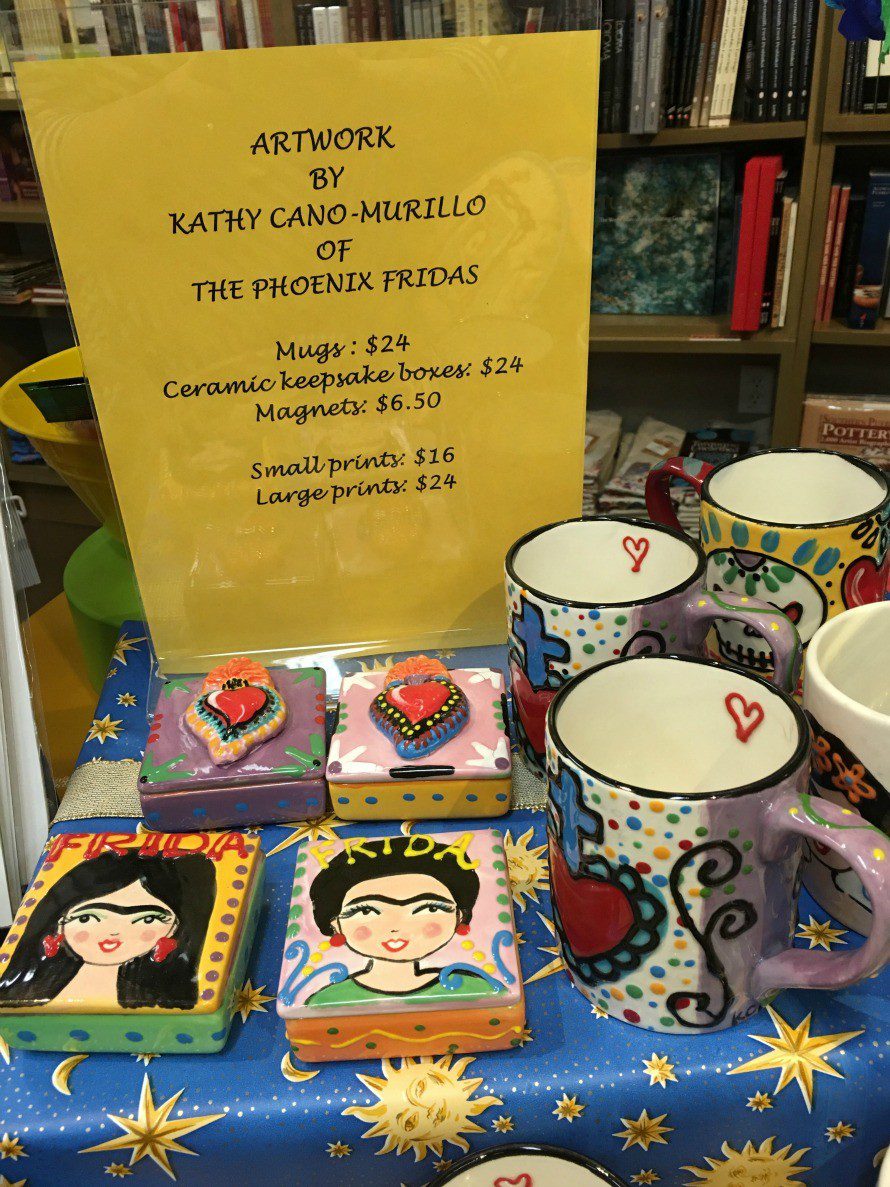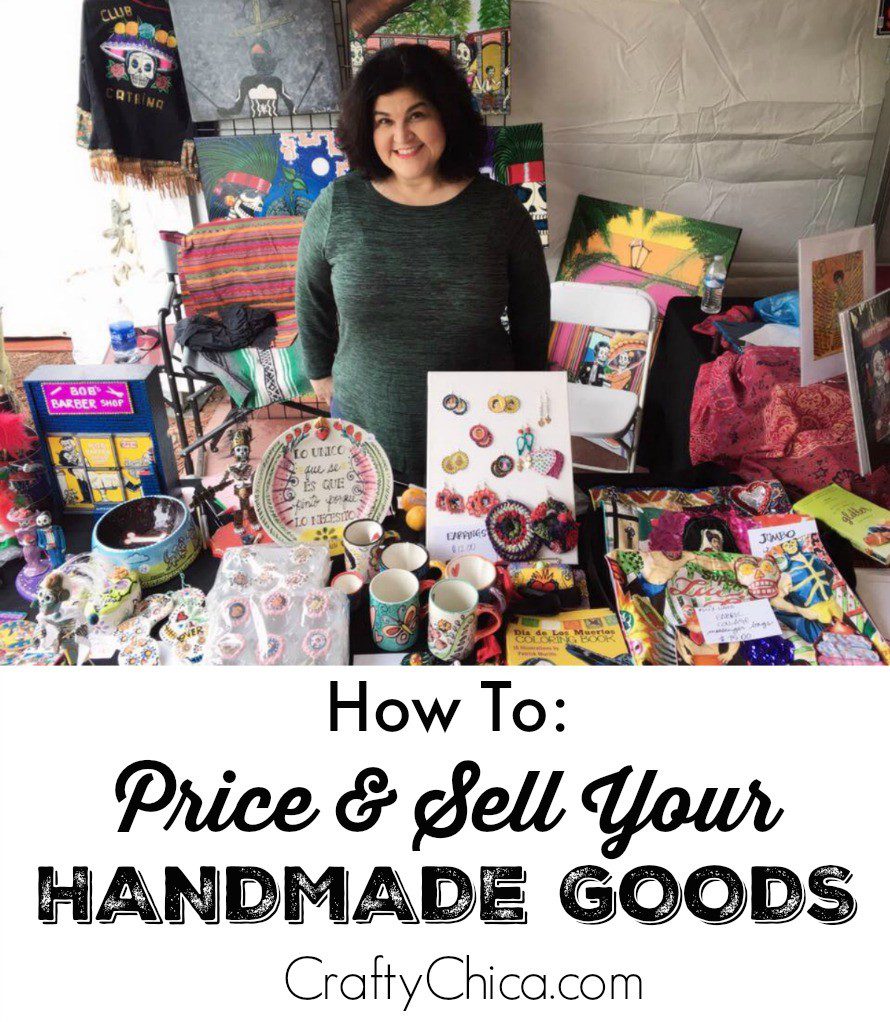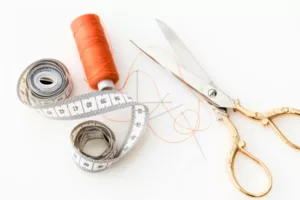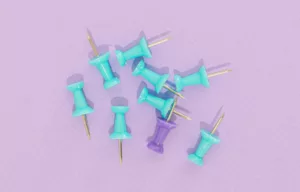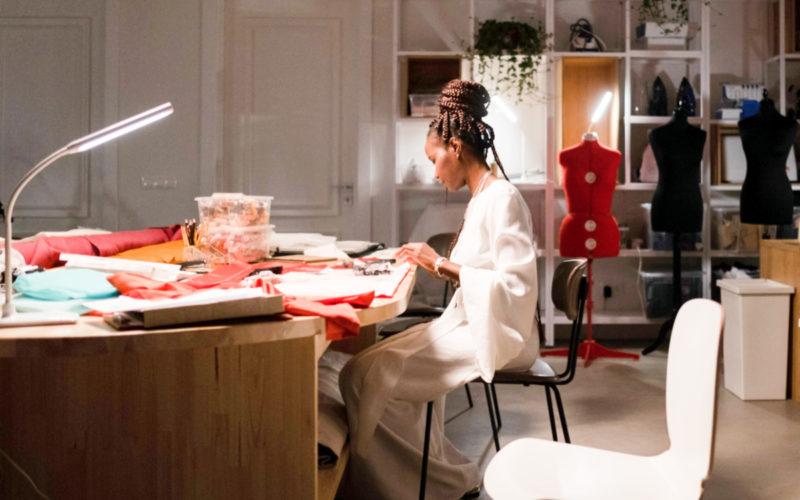It’s the eternal question that is always burning in our minds: What to charge for the things we make. I came across this article tonight, 10 Things You Shouldn’t Say When Pricing Your Handmade Items, by Janine from Life’s Big Canvas. I loved this article because it really hit on some thoughts that even I, a vetrana of hustlin’ my wares, have from time-to-time.
Things like, “Will people really pay that price?” or “Aw, it’s nothing, I just made these to use up my supplies.”
Can you relate?
I wish I could say I have a foolproof mathematical method, but I don’t. I gathered up some helpful articles on this topic and will list them below, because everyone has a different perspective. For now, I’ll share how I do things. Again, I’m speaking for myself, this is what works for me!
When I’m making ART to hang (or sell), I have no boundaries, I just let myself create. Once all is said and done, I factor in the time, talent and materials.
However, with multiple finished goods to sell, I think like a fashion designer. I’ll brainstorm a collection idea. I identify where I want to sell the line and to whom, and that helps me determine the price range. From there, I’ll work to come up with design ideas to fit that. I figure in my day rate, the time involved, materials, signature style and…where my new collection fits in the big picture of the retail world.
When I get an idea for something to make and sell, I first research online to see if someone else is already doing it. If so, then I go back to the drawing board to put a different twist on the idea. I have to make my item unique enough to warrant the price I’m asking. I also look at comparable items, for example, “handpainted fired ceramic mugs.” I scope out all of the category to see the high and low. Then I’ll come up with a price point and then design my item to fit that range. To fit a price point, I’ll have to make several prototypes of them item to see how I can keep my design, but also save steps. Working smarter not harder!
Another tip along that line…I always like to think functional as much as possible. Items that have a function (earrings, mugs, etc) sell better than non-functional items (prints, mixed media art). That’s just me, it may be very different for others.
Once I have my prototypes of designs, I do focus groups of all the variations. I’ll present them to my friends and ask them to choose one. The first ones picked are my success measures! That way I know to do more of those designs. Sometimes it works the other way around. I won’t look at anything and just crank out a bunch of items because I’m in the mood. Once they are all done, I factor in the time, materials and talent. And another twist – I also sell wholesale. That means more adjustments, some items, like the ones I just whip up with no planning, I simple cannot sell wholesale, only retail. That’s perfectly fine!
In order to keep my costs down, I think of substrates I can gather, use, and cut on my own and that go a long way – like paper, clay, wood, boxes, tin, etc. Unless it is an art piece, I tend to stay away from pricey items to start with.
I also have different avenues to sell – online, local shows, local store buyers, corporate gifts. I never let my merchandise sit and gather dust, I’m always working to find it a home. If I’m selling at an event, I’ll ask if they have all handmade items, or if there are imported or mass merchandised booths too. I don’t like to do shows where there are other booths that sell imports or mass produced items. My handmade work cannot compete with that (usually low) pricing. So I’ll ask to please have a spot that isn’t next to one of those types of booths. That helps me have better sales.
What also helps to sell is to have a group of like items with the same price. For example, I can have one chalkboard with prices for five things: Mugs, Prints, Earrings, Scarves, Canvases. Rather than have a bunch of single items at different prices, I like to have a categories of items. I can’t say I stick to this 100%, but I do use it as a guideline.
In order to put a price tag that is worthy for you, you have to do your part too! Conduct quality control on your items, make sure they won’t break, they are free of smudges, dents, creases, snags or smears. I like to buy a lot of handmade jewelry from artists, and wow, many times the pieces break on the first wearing. Luckily I can replace the findings, but it makes me think of the normal consumer who maybe doesn’t have wire, jump rings and pliers at their disposal!

Here’s an example of a price breakdown on my watercolor paper earrings:
Supplies for 24 pairs of earrings: $10
Time to make and assemble, my signature touch: $100
I also factor in tools and electricity, display board and/or bags, etc.
It comes out to $5 per pair. I’ll end up selling each pair for $15 direct to consumer, I can also mark them down for a sale and still meet my profit goal. Could I bump it up to $20? Yes, if I had to pay a booth fee, pay a percentage OR if I wholesale them for $10 to a store, who will then sell them for $20. If that’s the case, I have to make sure I sell them online in my store for that price too. The last thing the store owner wants is for a customer to look at my earrings in the store, pull out their phone and look up my Etsy shop and see them for cheaper. So I know when I sell to stores, I have to match that price in my online shop.
To be a working designer, you have to be able to surf your talent and business skills from show to show, crowd to crowd. One size does not fit all. I LOVE making things, I’ve been selling my pieces for two decades now. I’ve learned that to be successful, I have to adapt and get creative with my designs, my time and what I charge. Have I ever underpriced? Yes. Why? Because sometimes in certain situations, if I stuck to prices that reflected my worth…I would likely still have that merchandise because people couldn’t afford it. That’s just real life, things happen.
The beauty of being creative is that ideas are limitless! Anything goes! I also have a little area in my studio for stuff that didn’t sell. It doesn’t mean they suck, they just didn’t find a home. So I find one for them: I use these as giveaways!
Alrighty, that’s my story. Here are those articles I promised!
How to Price Your Crafts by LaunchGrowJoy
How to Calculate Your Daily Rate – Simplified by Rainmaker Media Works
Pricing for Intensive Handmade Items by Handmadeology
Tips for Pricing your Handmade Goods by Craftsy
Are You Paying Yourself Enough? by Etsy
Now it is my turn to ask you – how do you go about pricing your items? Please share!
